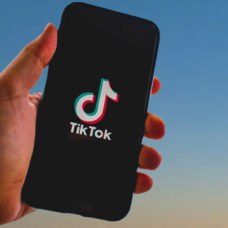EDGY predictions have a track record of being right. With this in mind, our latest EDGY prediction regards smart TVs.
Naturally, SEO is the backbone of content marketing and digital content creation.
You cannot create digital content without considering SEO needs, search algorithms, and consulting various online tools to discern keyword ratings, domain visits, and other metrics that affect web traffic.
Many manufacturers are integrating AI assistants, like LG’s tv with built-in Google Assistant. Smart TVs, by their nature, are IoT devices: assistant integration only makes their internet connection even more leverageable.
With this, it’s almost inevitable that SEO will become more relevant for TV platforms on the whole. So how does Android TV fit into this prediction?
Since Google’s Voice Assistant is built into Android TV, they’re already way ahead of the curve.
Why Pay-TV Operators Love Android TV
Last year, many pay-TV operators began opting for Google’s Android TV over competitors. What is a pay-TV operator? — good question.
Pay-TV operators include companies like Windstream, AT&T, or Tivo.
All three companies are prepping Android TV boxes to take advantage of the Android TV operator tier. This tier offers a certification level for Android TV devices. It allows companies — like pay-TV operators — to personalize the platform for their needs.
WeTek specializes in Android TV, providing video distribution solutions.
They posted not one, but two articles detailing information on how companies could customize the operator tiers to their liking. You can read the overview here and find more details here. But here’s a quick rundown:
- Companies can set fixed locations for the first two apps along the top row, which users cannot change.
- Clients can customize boot-up screens or setup experience.
- Added DVR or video-on-demand content integration without third-party app blockages (like Netflix and Youtube).
There are more perks, but these main three mean a great deal to companies. After all, by pinning your choice of apps, you can increase the likelihood that the users will watch your content.
It’s a bit dystopian, really: companies picking what media we engage with and the users not being able to have a choice to disengage this feature.
But, as a millennial raised in a consumer-focused and profit-driven culture, I’ve known for quite some time that I am the product. However, what is different now is that we all have the power of self-awareness and agency.
A Brief History of Mediocrity Leading to Success
When Google TV launched in 2010, the response was lukewarm (at best).
This was before the virtual assistant craze took off, and even before, people considered how much information they gave away for free to companies like Facebook.
At the time, the platform combined the Chrome browser with the Android operating system. Over the years, Google honed this concept, releasing another iteration based on Android 5.0 Lollipop.
It focused solely on “big-screen” devices, and Google dubbed it “Android TV.”
Several devices launched for it, including the Nvidia Shield and the Nexus Player. But another breakthrough came with Android 6.0 Marshmallow, which sparked many smart TV operators to choose Android for their OS.
Then the Channel API paired with a TV Input Framework (TIF) took things up a notch. It allowed app developers to house content on the OS search tool and launcher.
All new devices updated to Android TV Oreo™ last year will move to Android TV Pie in the future. This means that devices can run the system with as little as 1 GB of RAM.
One of the best innovations about Android TV is that compatible devices have longer life cycles. For instance, a Nexus Player from its original launch in 2014 can still run on an Android TV 8.0 Oreo™.
The development cycles for middleware integration are also up to 60% shorter, as well. This makes for a quicker-to-market time, and that works out best for producer and consumer.
But for all of its technical prowess, Android TV excels in providing its core user base with a product that they want to use.
Harnessing Search Power and Accessibility for Android TV
Shalini Govil-Pai, the senior director of product management for Android TV, spoke with Twice.com about where and how voice control fits in the smart TV environment.
Govil-Pai said that the OS didn’t matter to consumers as much as voice control or Google Assistant integration did. Of course, everyone asked about Netflix and YouTube presence, as well.
But Govil-Pai raises several valid points here:
- OS matters — you can’t stream Amazon on a Chromecast, remember?
- Native apps matter — everyone needs the essentials (Netflix).
- Voice and Assistant Integration matters — Alexa, Google, etc.
Furthermore, Govil-Pai mentions that the data they have suggests that some users spend up to 40 minutes trying to find what to watch.
“Google’s strength is in search and discovery. So how do we bring that strength of ours to the TV, to help people find the content they want to watch?”
Voice controls will become an integral part of the smart home system, she believes. In fact, Android TVs are positioned to become a central contact point for intelligent home systems.
At CES this year, Google debuted with many TV brands on board for Android TV including:
- Hisense
- TCL
- Skyworth
- Philips
- Haier
- Xiaomi
- JVC
- Changhong
- Toshiba
- Sony
There is also a rumored redesign on the way — the second one in fewer than two years. But Govil-Pai believes that all of this serves to implement Google’s AI and search engine capabilities better and improve user and client experience with Android-powered television.
If Google can combine its search engine power with industry-attracting features for pay-TV operators, we may all have Android TVs very soon.



















Comments (0)
Least Recent